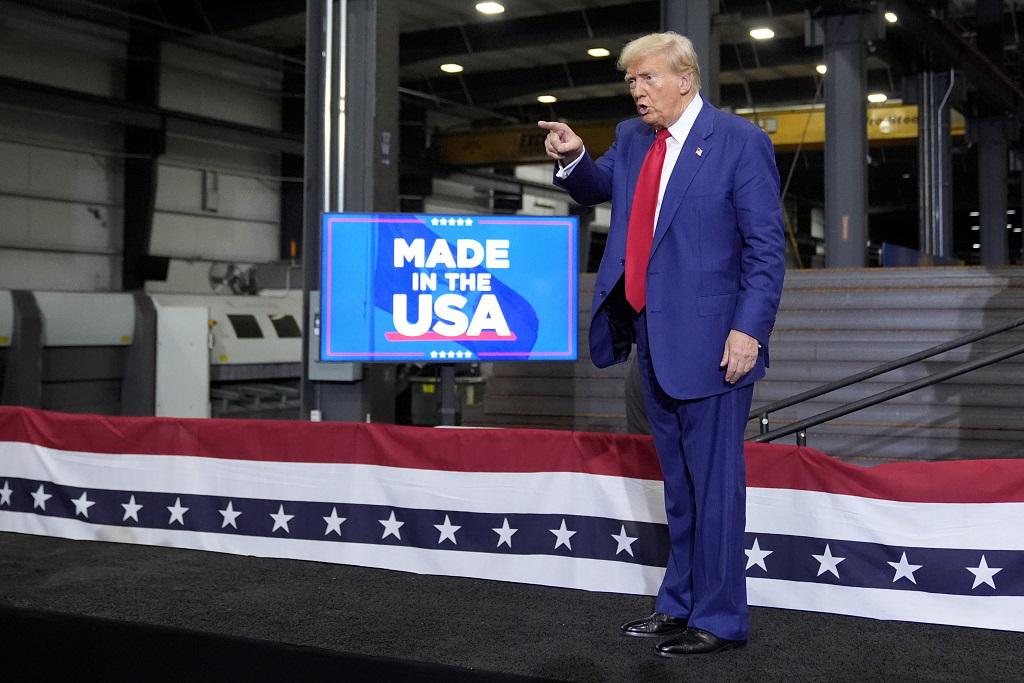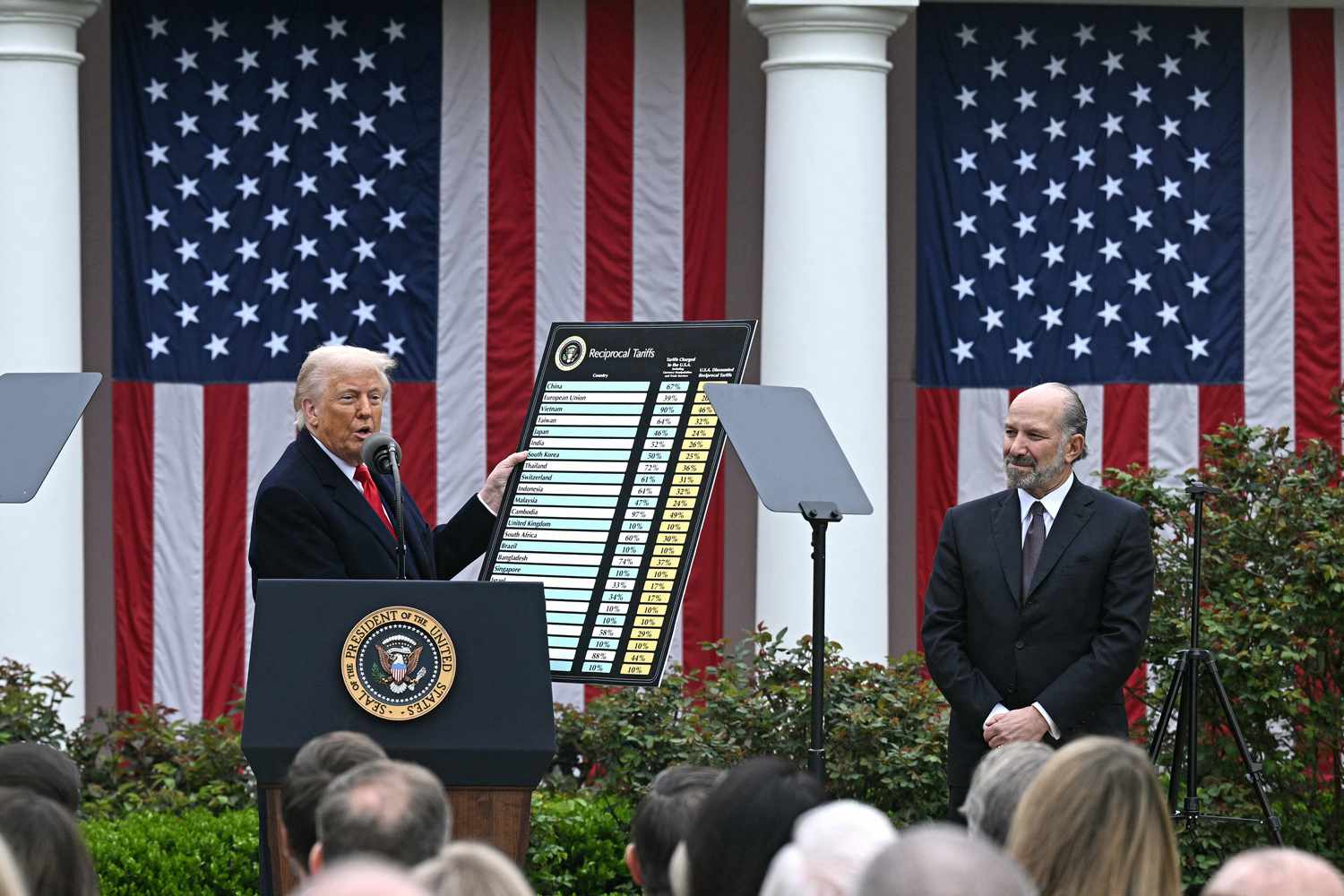A broad vision is necessary if the United States wants to bring industry back home. The time has come for the it to reconcile its ambitions with on-the-ground realities. Washington should develop a sustainable strategy for managing relationships with other major powers, especially China.

The imposition of sweeping tariffs is unlikely to revitalize America’s declining manufacturing sector and may, in fact, undermine the fragile progress made in its recent industrial revival. To move forward, the United States must reconcile its ambitions with on-the-ground realities and prioritize building strong, reliable partnerships. By fostering deep integration in global trade and industry, the U.S. can help reconstruct resilient production networks. A long-term, sustainable strategy is essential for managing relationships with other major powers.
On April 2, President Donald Trump, speaking from the White House, announced the implementation of so-called “reciprocal tariffs” targeting U.S. trading partners. The pronouncement was met with swift international condemnation and precipitated an immediate decline in major American stock indices. Trump was evidently cognizant of the mutual harm such measures might inflict — damaging adversaries, but also imperiling U.S. interests. Nonetheless, in pursuit of reshoring American industry and advancing the rallying cry “Make America Great Again,” this tariff initiative appears to be a drastic, even desperate, choice born of protracted deliberation.
Yet, tariffs as a tool for protecting domestic industries are a relic of a bygone era — more suited to the nascent stages of industrial development than to today’s intricately interwoven global value chains and technologically advanced production systems. Undertaking such an expansive economic experiment unilaterally risks sowing disorder in global trade, disrupting the international division of labor and shaking the fundamental logic underpinning globalization.
This radical departure from prevailing norms may ultimately sabotage the very progress the Trump administration seeks to consolidate in its second term. The economic and social repercussions are likely to emerge forcefully in the coming midterm elections, potentially bringing an abrupt halt to fleeting reformist momentum.
America’s reindustrialization requires an inclusive development philosophy and a wiser, more pragmatic policy approach rooted in economic realism.

President Donald Trump delivers remarks on reciprocal tariffs as Secretary of Commerce Howard Lutnick looks on, April 3, 2025. (Photo: Brendan Smialowski / AFP / Getty Images)
The illogic of growth by tariff
In the early stages of global industrial development, when the diversity and complexity of manufactured goods was limited, protectionist policies played a catalytic role in nurturing domestic industries. The practice of shielding emerging sectors through high tariffs dates to the formative years of the United States. In 1791, Alexander Hamilton, the nation’s first treasury secretary, presented his seminal Report on the Subject of Manufactures to Congress. In it he called for government subsidies and protective tariffs to bolster America’s fledgling industrial base. This foundational document established a cornerstone of global protectionist theory.
For more than a century thereafter, the United States adhered to this protectionist ethos, gradually ascending to global preeminence in manufacturing. Hamilton’s vision profoundly influenced the German economist Friedrich List, who later articulated the influential “infant industry” argument. Drawing from the logic of tariff protection, many late-industrializing nations adopted high-tariff regimes to defend their domestic markets and foster indigenous industrial development. Within the architecture of multilateral trade, it became commonplace for developed nations to impose asymmetrical tariff structures on developing economies.
The Trump administration’s decision to impose sweeping tariff increases was, to a considerable extent, shaped by historical precedents. It is a widely held belief that protectionist tariffs can shield domestic industries from the adverse effects of foreign competition, thereby encouraging capital repatriation and fostering investment within national borders. However, such measures — deeply rooted in the economic logic of earlier industrialization — are ill-suited to the complexities of today’s globally integrated production networks. The theoretical assumptions underpinning these tariffs confront significant structural limitations in the context of the modern global economy.
During the early stages of industrial development, it was common for emerging economies to construct domestic industrial systems through state-led, quasi-capitalist policies. Under these conditions, elevated tariffs functioned as a transitional mechanism that provided a protective window during which time nascent industries could mature. Once a certain threshold of economic development was attained, these nations typically liberalized trade and integrated more fully into global markets. This model proved effective for countries in the “catch-up” phase of development.
The United States, however, occupies a fundamentally different position. Having long since entered a post-industrial phase, the U.S. is now endeavoring to re-industrialize — particularly in foundational sectors. Yet it has failed to articulate a coherent policy rationale as to whether elevated tariffs are intended as a temporary shield for domestic industry or as a permanent structural realignment. This dissonance between the nation’s mature economic stage and its retrograde industrial policy orientation casts serious doubt on the long-term viability of its current tariff regime. Unless the U.S. government embraces a strategy of enduring protectionism, effectively decoupling from global supply chains, it will confront the paradox and economic burden of what might be termed “parallel industrialization” — attempting to revive mature industries while competing under similar conditions with developing economies still in the ascendancy.
Industrial revival and social risk
The pursuit of re-industrialization through broad-based tariff increases lacks the policy coherence necessary for long-term sustainability. The United States does not have the domestic capacity to independently manufacture the full spectrum of components and intermediate goods essential for modern production. Consequently, tariff increases are directly transmitted throughout the manufacturing process, significantly inflating the cost of domestically produced goods. Under such conditions, U.S. manufacturing forfeits its competitiveness in global markets and becomes increasingly reliant on domestic consumption — a model constrained by the logic of “Made in America, for America.”
Theoretically, the existing framing of tariff escalation means that duties levied on intermediate goods are absorbed into manufacturing costs through a weighted composite mechanism. These cost increases are further amplified by multiplier effects arising from labor costs and institutional rigidities. The imposition of sweeping tariffs will not only fail to rejuvenate America’s waning manufacturing sector but may also jeopardize the fragile gains already achieved in its industrial resurgence.
From the vantage point of production costs and competitive advantage, the efficacy of policies aimed at incentivizing multinational corporations to relocate manufacturing operations to the United States — chiefly as a strategy to circumvent tariffs — remains highly debatable. On one hand, firms may indeed establish a physical manufacturing presence within U.S. borders, motivated by political pressures or enticed by governmental subsidies and fiscal incentives. On the other hand, it is likely that such corporations will continue to maintain substantial segments of their supply chains abroad, particularly to reduce the tax liabilities associated with importing intermediate goods.
Moreover, manufacturing enterprises may resort to transfer pricing mechanisms — exporting goods to the U.S. at artificially low valuations and subsequently repatriating profits through capital account transactions — as a means of minimizing their overall tax burden. Trading companies may adopt analogous methods. As a result, the imposition of higher tariffs as a lever to drive domestic reinvestment may lead only to what could be termed “symbolic production” within the United States, or productions limited to the final stages of assembly or manufacturing. In essence, strategic corporate restructuring can significantly offset the intended impact of broad-based tariff increases, rendering such protectionist measures largely ceremonial in their capacity to truly reshore industrial activity.
In addition, elevated inflation constitutes a critical threat to the socioeconomic stability of the United States. Recently, analysts at Deutsche Bank sounded the alarm about investor anxiety regarding the specter of stagflation — a peril driven predominantly by supply-side constraints. The introduction of further tariffs only serve to deepen such constraints. Without a robust and resilient domestic industrial infrastructure, these supply-side bottlenecks are poised to exacerbate inflationary pressures.
Unlike the response of the 1970s — when the federal government tackled stagflation through tax reductions and deregulation to stimulate supply — today’s tariff escalations reflect a markedly divergent policy trajectory. This reversal may further impair supply conditions. Simultaneously, the broader ramifications of heightened tariffs are likely to be felt acutely in the daily lives of American households, with ripple effects extending across the social fabric. Given the cumulative inflationary pressures that have persisted since the COVID-19 pandemic, aggressive tariff regimes risk igniting serious societal discontent, intensifying political polarization and widening existing socioeconomic divides. These tensions may ultimately culminate in a broader crisis: a dissolving of social cohesion.
A call for openness and humility
The United States, having long ago relinquished its status as the undisputed leader in global manufacturing, has yet to fully abandon the hubris once associated with that position. Its approach to foreign investment remains fraught with suspicion and resistance, often cloaked in the rhetoric of national security. As the nation now embarks on a journey of reindustrialization, it would be wise to look to history for guidance — embracing openness, exercising humility and seeking committed, capable partners.
In the aftermath of World War II, the United States played a critical role in revitalizing the industrial base of Europe and Japan. The nations of Europe, eager for peace and reconstruction, welcomed the Marshall Plan with open arms. Today, after more than a half-century of deindustrialization, the United States would do well to adopt a similarly pragmatic and open stance — welcoming, rather than rebuffing, investment from Chinese enterprises, even those shaped by a Marxist heritage. At this unique historical and geopolitical juncture, lies an opportunity for Marx and Marshall to coexist in a new chapter of cooperation and shared development by major global powers.
Chinese enterprises seem to be fully prepared for a large-scale investment in what could be described as a new Marshall Plan for the United States. Related industries in China are capable of entering the U.S. market in a highly organized and systematic manner within a short period of time.
From a strategic standpoint regarding the United States, Chinese policymakers tend to prefer seeing the business sector make efforts to balance production capacity between China and the U.S. In the face of the intensifying China-U.S. trade rivalry, targeted industrial cooperation in key sectors could serve as a catalyst for America’s lagging reindustrialization efforts. Should manufacturing powerhouses like BYD and Xiaomi shift production to American soil, palpable industrial gains could be achieved even within the current presidential term. China is also showing no hesitation about investing heavily in three other new industries — electric passenger vehicles, lithium batteries and solar cells — as well as in traditional manufacturing sectors such as steel and shipbuilding.
Under the framework of the high-quality Belt and Road Initiative, Chinese industrial capacity is increasingly being deployed globally, driving modernization across much of the Global South. The United States must recognize the long-term implications of emerging economies that may replicate China’s rapid industrial growth. By proactively evaluating its development strategies in the context of anticipated global industrial expansion and forthcoming competition from other regions, the U.S. can better position itself for lasting economic prosperity. Absent such strategic foresight, merely expanding tariff measures will ultimately prove ineffective.
Major powers can engage in more substantial deals. The time has come for the United States to reconcile its ambitions with on-the-ground realities — to exercise humility and prioritize building strong, reliable partnerships. By fostering deep integration in global trade and industry, the U.S. can help reconstruct resilient production networks. Washington should develop a sustainable strategy for managing relationships with other major powers, working collaboratively to lay a stable economic foundation for long-term cooperation with China.